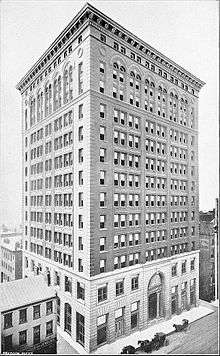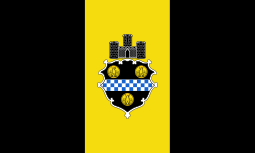Carnegie Building (Pittsburgh)
The Carnegie Building, also known as the Carnegie Steel Building, was a high-rise building in Pittsburgh, Pennsylvania. The structure started construction in 1893 and was completed in 1895 as the city's tallest at the time. It was the first steel-framed skyscraper in Pittsburgh upon completion. The building served as the world headquarters of Carnegie Steel Company,[1] a steel producing company of the late 19th century created by industrialist and philanthropist Andrew Carnegie to manage steel mills in the city, and later to become U.S. Steel. The building was a Downtown Pittsburgh landmark and was located at 428-438 Fifth Avenue. It was torn down in 1952 for an expansion of Kaufmann's flagship store.

Height and design
The Carnegie Building was an early example of Chicago school architecture in Pittsburgh,[2] and was designed by the architectural firm Longfellow, Alden & Harlow.[3] It rose 13 floors in height, and stood as the first steel-framed skyscraper in Pittsburgh[4] and one of the first steel-cage structured buildings in the world.[3]
References
- "Mellon Square". Archived from the original on 2008-03-06. Retrieved 2008-04-06.
- "Carnegie Building". SkyscraperPage.com. Retrieved 2008-04-06.
- "Carnegie Building". Emporis.com. Retrieved 2008-04-06.
- Walsh, Glenn A. "History of Industrialist, Art Patron, and Philanthropist Henry Clay Frick (1849–1919)". Retrieved 2008-04-06.
